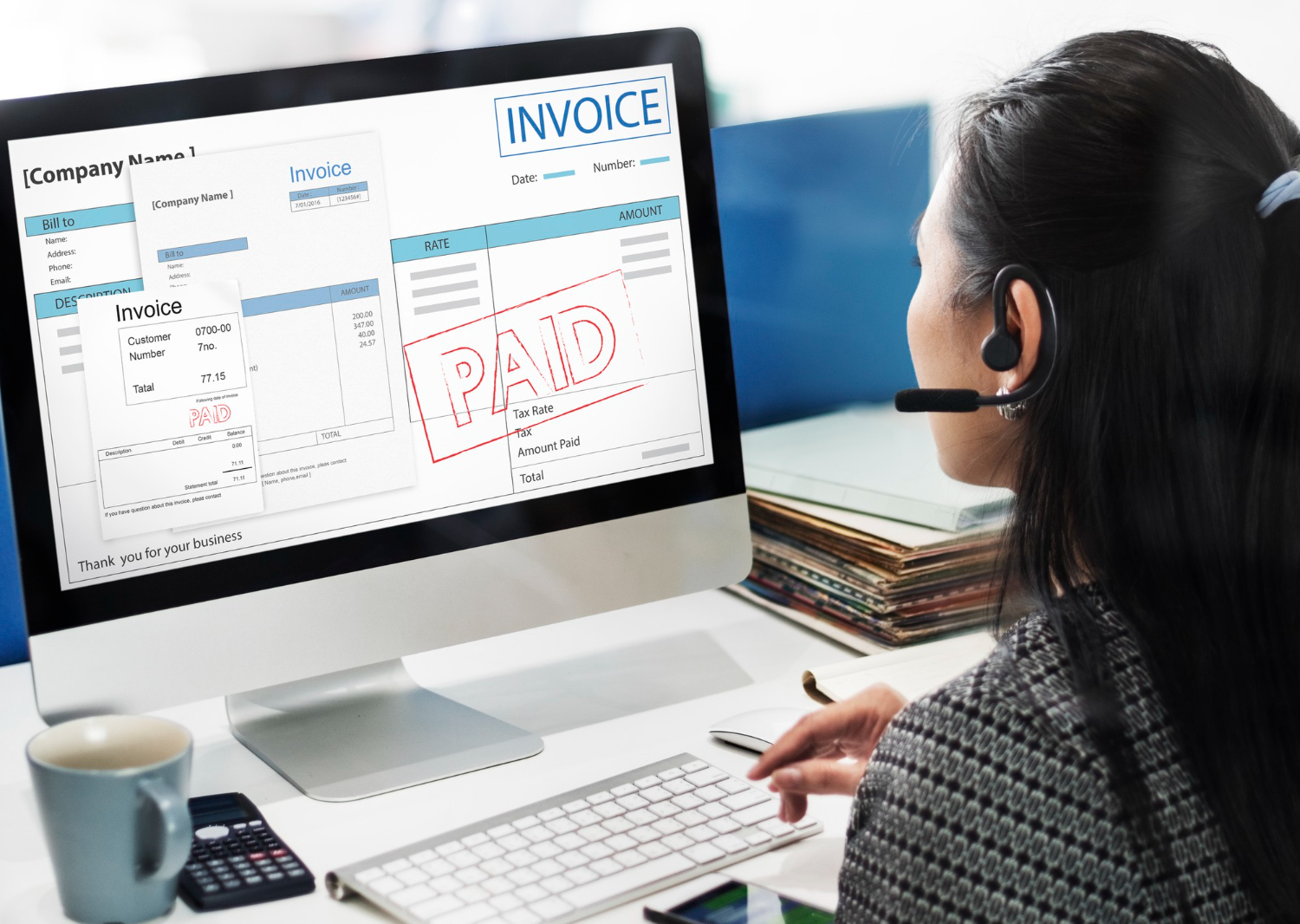An automated invoice processing system means using software to handle incoming invoices instead of doing it by hand. It reads the invoice, pulls out the key details, checks the numbers, and sends it through for approval or payment. This helps businesses save time and avoid mistakes. No more typing the same thing over and over or chasing paper.
With the right automated invoice management system, you can process invoices faster and with fewer errors. It’s especially helpful for companies that get hundreds or even thousands of invoices each month. The process becomes smoother, and your team has more time to focus on other work. That’s why more and more businesses are switching to this method.

How Automated Invoice Processing Works
Every business deals with invoices. If you still do it by hand, you know how slow and frustrating it can be. That’s where automated invoice processing comes in. It’s a smarter way to manage incoming bills using software instead of people doing everything step by step.
So, how does it work? First, the automated invoice systems get a digital copy of the invoice—this could be from email, a scanned paper, or uploaded straight into the system. The software reads the invoice and picks out all the important details: who it’s from, how much it’s for, the invoice number, and the due date. It also works well with other tools, like website personalization software. It adds a personal touch while keeping the process smooth and automatic.
Then it checks if the invoice matches a purchase order or contract, if there is one. If everything lines up, it sends it to the right person for approval. Once that person gives the green light, the automated invoice systems send the invoice to the accounting software or bank for payment. All of this happens without anyone having to type it in line by line.
What’s this used for? It’s used by companies of all sizes to:
- cut down on manual work,
- speed up payments,
- catch mistakes early.
No more lost papers or emails sitting in someone’s inbox for weeks. The process is faster, more organized, and easier to track.
Also, it helps teams see what’s going on. You can check the status of an invoice any time. This helps avoid late payments or paying the same invoice twice. People can focus on what really matters instead of just typing and checking. In short, automated invoice processing takes a boring, slow task and makes it fast and simple.

Invoice Automation Benefits: Top 10 Advantages
When you automate your invoice system, you don’t have to enter everything by hand. You don’t need to chase down lost papers or spend hours fixing small mistakes. The software does the hard part, and you just check and approve when needed. Below, we’ll go over ten key benefits of automated invoice processing and show you how it can make a real difference.
1. Saves Time on Manual Entry
One of the biggest benefits is saving time. Normally, someone has to type in all the invoice details—vendor name, amount, due date, and more. That takes a lot of time, especially if you get hundreds of invoices a month. According to PayStream Advisors, companies using automated invoice processing have increased productivity by 33% and reduced processing costs by 42%.
With invoice process automation, the system reads the invoice and pulls the details on its own. This means your team can focus on approvals instead of typing. For example, if your team spends 3 minutes per invoice entering data, and you get 1,000 invoices per month, that’s 50 hours saved. That’s more than a whole week of work.
2. Fewer Human Errors
People make mistakes. It’s normal. Maybe someone types the wrong amount, skips a field, or attaches the wrong file. These small errors can lead to big problems, like paying the wrong amount or missing a payment.
Automated invoice systems cut down on these mistakes. The software reads each invoice and follows a clear process. It flags anything that doesn’t match, like the wrong total or a missing PO. For example, if an invoice says $2,550 but the purchase order says $2,500, the system catches the difference before payment.
3. Faster Approval Process
Waiting for approvals can hold everything up. Sometimes an invoice sits in someone’s inbox for days or even weeks. With automation, the system sends it directly to the right person, and that person can approve it with just a few clicks.
You can even set reminders or rules so invoices don’t get stuck. Let’s say your finance manager approves anything under $1,000. The online invoice approval system can send those invoices straight to her and flag anything higher for extra review. No more wondering who has it or where it is.
4. Easy Tracking and Status Updates
With paper or email invoices, it’s hard to know what’s been paid, what’s waiting for approval, and what’s overdue. You have to dig through folders or ask around.
Automation gives you a clear view. You can check the status of any invoice in seconds. Need to know if Vendor A got paid? Just search their name. Need to find all unpaid invoices from last month? The automated invoice capture software shows them all. For example, if a vendor calls and asks, “Where’s my payment?”—you don’t have to search through emails. You just look it up and give them a straight answer.
5. Lower Costs Over Time
You might think software costs more than doing it manually, but that’s not always true. When you add up the hours spent on manual work, errors, late fees, and paper use, it gets expensive.
With automation, you save money in many small ways. You don’t need as much paper, printing, or storage. You also avoid late payment fees and double payments. Over time, those savings add up. For example, one small company cut its processing cost per invoice from $10 to $2 just by using an automated invoice processing system.

6. Better for Remote Teams
Many people work from home, which makes passing around paper invoices harder. Even sharing invoices through email can get messy. An automated invoice processing system works from anywhere. Team members can approve or check invoices from home, the office, or even their phone. This keeps the process moving, no matter where your staff is. For this to work well on all devices, companies often rely on front-end development services. A well-built interface makes it easier for staff to review, approve, or track invoices, whether they’re on a laptop or mobile.
For example, if your accountant is on vacation but needs to approve a big invoice, she can log in from her phone and do it in seconds. No need to wait until she’s back. And it’s not just small businesses making the switch. 65% of large companies now use automated invoice data entry systems to improve how they work. That shows this shift is becoming the norm, not just a trend.
7. Safer Document Storage
Paper invoices can get lost, damaged, or thrown away by mistake. Even digital files can be hard to find if they’re saved in different places.
Automated systems store all invoices in one safe place. You don’t have to worry about losing anything. You can also search by name, date, amount, or vendor. This helps during audits or tax season, when you need to pull up old records fast.
8. Easier to Catch Fake or Duplicate Invoices
Fraud is a real problem. Some scammers send fake invoices hoping someone will pay without checking. Other times, a vendor might send the same invoice twice by mistake.
An automated system can catch these issues. It checks if an invoice has already been entered or if the vendor isn’t on your approved list. This lowers the chance of paying money you don’t owe. For example, one company found out they were about to pay a vendor twice—$4,200—for the same job. The automated invoice processing system flagged it, and they stopped the second payment just in time.
9. Better Cash Flow Management
Knowing when payments are due and how much you owe helps with planning. If you’re always behind or missing payment info, you can run into cash problems fast. Automating invoicing gives you a clear picture of what’s coming up. You can sort invoices by due date and avoid last-minute surprises. You can also plan early payments if you get a discount. In fact, 84% of businesses that fully automated their accounts payable saw better cash flow and more savings. That’s a big jump and proof that the right tool can make real change.
Let’s say a vendor offers a 2% discount if you pay within 10 days. With automation, you can spot that and act fast, saving money while staying on good terms with the vendor.
10. Improved Vendor Relationships
Vendors want to be paid on time. When you pay late or make mistakes, they lose trust in you. That can hurt your working relationship. With automation, payments go out faster and with fewer problems. This shows vendors you’re reliable. In return, they may offer better terms or respond faster when you need help. For instance, if you always pay Vendor B within five days using the automatic invoice processing system, they might let you skip the deposit on your next big order. That kind of trust can lead to long-term benefits.
Automated invoice processing isn’t just about speed. It’s about making your work life easier. You spend less time doing the same task over and over. You make fewer mistakes. You avoid late fees and bad surprises. And you keep better track of what’s happening with your money.
It’s not about chasing the latest trend. It’s about solving a real problem in a simple way. If you’re still doing invoices by hand, this might be the change that saves you time, money, and stress. Try it, and see how much smoother things can be.
Contents
1. How Automated Invoice Processing Works
2. Invoice Automation Benefits: Top 10 Advantages
3. 1. Saves Time on Manual Entry
4. 2. Fewer Human Errors
5. 3. Faster Approval Process
6. 4. Easy Tracking and Status Updates
7. 5. Lower Costs Over Time
8. 6. Better for Remote Teams
9. 7. Safer Document Storage
10. 8. Easier to Catch Fake or Duplicate Invoices
11. 9. Better Cash Flow Management
12. 10. Improved Vendor Relationships
Back to the top
